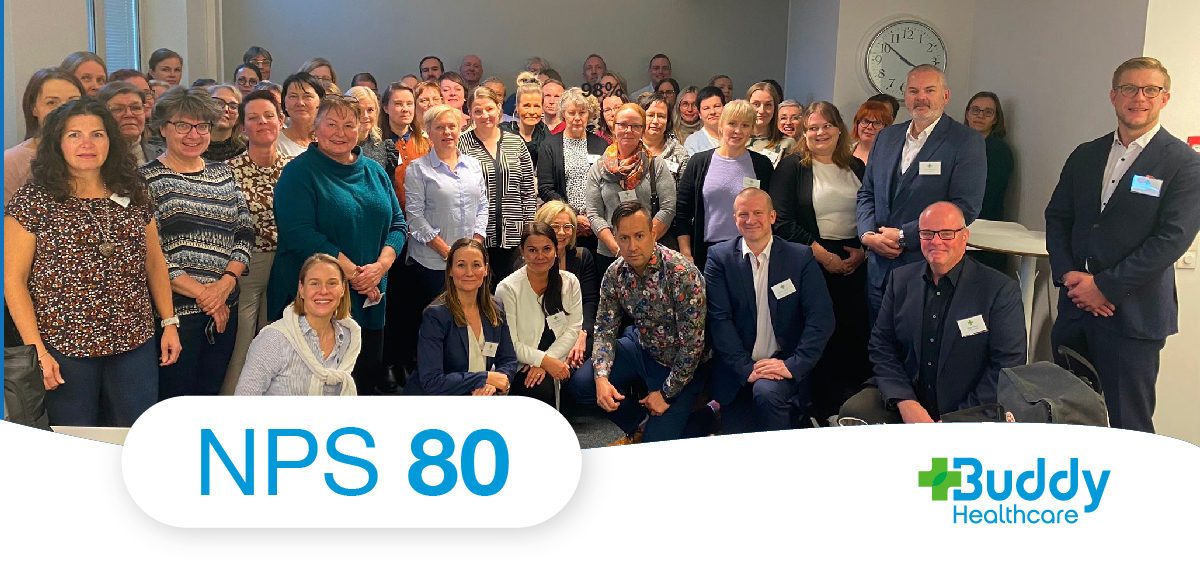(Organizational) change is the only constant in the medical field
Change.
The thought alone sends shivers down many a spine.
But why is it that we have such a primordial resistance towards it, especially within medical establishments, when we all have only been able to migrate past the protozoal state because of change.
I, for one, am happy to be made up of more than one cell.
I am equally thrilled with having moved from grade school into high school, into university and so on. We all strive to grow but then are afraid of change all the same. It’s a paradoxical experience; the wish to move forward in life and, yet, to find oneself not willing to endure the discomfort it would take to do so.
It is important to make a distinction between different kinds of change, of course. Not only are there different varieties of personal change, but organizational change also comes in multiple forms - including but not limited to the healthcare sector’s changing environment.
What is organizational change?
Organizational changes happen in many variations. Some are inevitable, some optional, and some are highly advisable for the success of a business.
Inevitably, there will always occur a level of evolutionary change, as small variations in the way that people or processes behave cannot be avoided. Revolutionary and directed change are the other two types of organizational change according to change management consultancy group CITI.
Revolutionary change refers to the type of process overhaul that is caused by external forces and can not be avoided. Whether or not this change is welcomed depends on the perspective and role of the organization and what kind of power shifts are happening. In most cases, this is likely a radical and undesirable change.
Directed change on the other hand, is planned and based around a specific purpose and goal. Within directed change a distinction is made between developmental, transformational and transitional change. All of them require an organised approach where management and workforce are brought into alignment in order to facilitate a shift in processes and culture. With developmental change, the most rudimentary form of directed change, simple work processes such as interpersonal communication training are affected.
In transitional change an organization identifies an existing process and replaces it with something completely new, such as transitioning an analog record keeping system into a digital one. In this type of change the desired outcome and goals are clearly defined and predictable which is why traditional change management tools can be employed in order to plan, guide and deploy the new method or solution effectively.
Last but not least there is transformational change. The Cambridge Dictionary defines transformation as “a complete change in the appearance or character of something or someone, especially so that that thing or person is improved.” Because of the severe nature and depth of this change, it will prove to be the most challenging type of organizational change, as it requires visionary leadership, trust into the process, organizational agility and adaptability. The goals and outcomes are more abstract and not necessarily linear in their implementation. Thus, executives and managers have to take the lead in guiding the likely resistant and scared organization through these potentially perilous and uncertain times. Business examples of this are large mergers and acquisitions and radical rebranding of companies.
Types of reactions to organizational change in the medical sector
After being a part of the medical world for many years and working in a multitude of hospitals, I have had the opportunity to observe people’s reactions to change. It is safe to say that rarely anyone jumps up and down or volunteers themselves to lead the charge into uncharted territory. When, after much push and pull, a new solution gets implemented, the crowd ultimately adopts the change and only a few lag behind, still hanging on to systems that cannot stand the test of time.
Of course, there are also the types of people who thrive on change and quite easily dive into the unknown. This personality type is more likely found in classically innovative fields. And although allopathic, western medicine is of course innovative in some regards, the core organizational culture is arguably one of tradition, repetition and protocol. It is within these parameters of knowingness that errors can be minimized and best controlled. Change can, in fact, pose a great risk to the occurrence of potentially harmful or even sentinel events and incidents. Understandably, the individuals working in these medical organizations are often weary of change, except for a few pioneers.
Because of the nature of this beast, it is of utmost importance to study, understand and acknowledge the different types of personalities present in medical organizations. Well known professor of communications, Everett Rogers, proposed a characterization of people within organizations into 6 categories: innovators, early adopters, early majority, late majority and laggards.
This sociological model describing acceptance of a new product or innovation is referred to as the technology adoption life cycle. Within this life cycle, according to Roger’s bell curve, only about 2.5% of people fall into the category of Innovators, who navigate through change with ease, are generally of higher socio-economic status and willing to take risks. 13.5% of individuals comprise the category of Early Adopters, who are slightly more conservative in their willingness to adopt to a new change, but who most likely still tend to be opinion leaders. The two highest percentages (34% each) are made up of the early majority, who are more conservative but open to new ideas and the late majority, who are typically fairly conservative, in a higher age group and approach an innovation with a higher degree of skepticism than their preceding counterparts. Lastly, the laggards category, refers to the most conservative group, least likely to adopt a change. Laggards typically tend to be focused on “traditions” and harbor strong aversions to change-agents. No amount of hype or popularity will convince them.
If, however, the most skeptical individuals adopt a change, they very well may become strong advocates and valuable allies. Most good skeptics have a following of people who admire their analytical skills and value their conclusions. Winning over a skeptic often also means winning over their followers.
Always moving forward
Like time passing, change is inevitable - even in the healthcare sector. New technology is always emerging. The world around us is always evolving. Businesses change, economy changes, and culture changes, both within & without medical service providers’ workplaces. While it can feel like an uncomfortable experience at first, ultimately the acceptance of change will likely benefit productivity and delivery of results and service.
It may even be scary and feel “wrong” to adopt a new way of doing things. But isn't it true that in hindsight these organizational changes don’t seem so drastic at all? In order to keep up with the times and remain competitive, businesses have to surrender to the current of change and become experts at change management.
To think that we used to dial a rotary phone or send letters by mail to communicate with each other, and now we have electronic tools such as Email and texting or platforms such as Slack and Google Suite. Even the most skeptical of technology users must admit that not having to rely on those antiquated technologies is the only way to keep up with the increased workload and manage our time efficiently. We can no longer afford to call Sally Joe ten times in hopes to get a hold of her. Instead we have the possibility to use technology to keep us connected in real-time with a visualisation of the communication process and close the feedback loop much more efficiently.
Customer needs and the global economy are ever-changing and it is up to the organizations to anticipate these needs and ramp up their digital and technological landscape in order to do so. Not only will embracing change enable them to maintain their workflow, but it will help to optimize processes, grow their business and allow for optimal daily proceedings for clinicians and patients alike.
When you decide to let us join you on your organization's journey to evolve and grow with its surroundings, we are here to help facilitate a smooth transition in this change management process within your clinic or hospital. Because as the world changes, so must we - and change requires partners to have your back in face of the chanllenges.
Sources:
www.citi.co.uk
Rogers, C.1962 5th ed. Diffusion of Innovations




